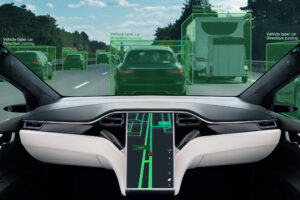
Kentucky to allow phased-in addition of AVs to its roads
By onLegal | Technology
Kentucky has passed legislation to allow autonomous vehicles (AVs) on state roads on a phased-in basis with a “driver” behind the wheel during the first two years from the effective date.
WEKU, an NPR charter member station, reports that passage of HB 7 came late into the night on the last day before a 10-day veto recess, ending in a 20-18 vote. The effective date is July 31, 2026.
“They [AVs], in fact, are better than a human driver who gets tired, who may get intoxicated, who may get distracted by what’s going in the cab. Those autonomous vehicles will not,” said Gex Williams (R-District 20), according to WEKU.
He noted that the bill applies to AVs that have undergone more rigorous testing.
Louisville Democratic Sen. Karen Berg reportedly spoke about a recent incident on a bridge near Louisville where a truck dangled over the side.
“[She] turned her wheel to the left and intentionally took her truck to the edge of the bridge, on purpose to save lives,” Berg said. “Would an electric vehicle know how to do this?”
The bill applies to SAE Level 4 and Level 5 AVs. More specifically, “automated driving system” is defined in the bill as “hardware and software that are collectively capable of performing the entire dynamic driving task on a sustained basis, regardless of whether it is limited to a specific operational design domain.”
Before an AV can be operated on Kentucky roads without a human driver, a law enforcement interaction plan has to be submitted to the Transportation Cabinet and the Department of Kentucky State Police that describes:
-
- “How to communicate with a fleet support specialist who is available during the times the vehicle is in operation;
- “How to safely remove the fully autonomous vehicle from the roadway and 25 steps to safely tow the vehicle;
- “How to recognize whether the automated driving system is engaged on the fully autonomous vehicle; and
- “Any additional information the manufacturer or owner deems necessary regarding hazardous conditions or public safety risks associated with the 3 operation of the fully autonomous vehicle.”
AVs have recently been under attack in California. In February, a mob in San Francisco smashed the windows of a Waymo vehicle, leading to a fire, after placing fireworks inside, according to an Independent article. No one was inside the vehicle.
This past summer, NPR reported on an anonymous activist group, Safe Street Rebel, using traffic cones to disable Cruise and Waymo autonomous vehicles to protest the city being used as a testing ground for the technology.
Waymo released a study late last year that claimed its AVs are safer than human drivers. Waymo saw an 85% reduction or 6.8 times lower crash rate involving any injury from minor to severe and fatal crashes or 0.41 incidence per 1 million miles for the Waymo Driver versus 2.78 for the human benchmark, according to the study.
Images
Featured image: Illustration of inside view from an autonomous vehicle. (Credit: Scharfsinn86/iStock)
